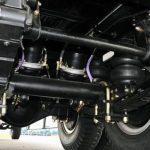The automotive industry is undergoing a significant transformation, driven by technological advancements and changing consumer preferences. This article explores the top five disruptive trends shaping the future of the automotive aftermarket.
1. Electric Vehicles and Its Impact on the Aftermarket
The ascent of electric vehicles (EVs) is revolutionizing the automotive aftermarket industry. As EVs surge in popularity, with a projected growth from 10.2 million units in 2022 to 32.2 million by 2030, they bring both opportunities and challenges to auto repair shops. Unlike their gasoline-powered counterparts, EVs demand less routine maintenance, eliminating the need for services like oil changes and spark plug replacements.


However, when repairs are necessary, they tend to be more complex due to unique components like electric motors and batteries, requiring specialized skills and tools. As more EVs appear on the roads, these parts will become increasingly popular. Additionally, there’s potential for new upgrades and customizations, similar to the traditional car market. This shift is not just a challenge; it’s a great chance for those ready to adapt to the world of electric vehicles.
2. Building a Future Workforce with Enhanced Software Skills
In the automotive aftermarket, building a future workforce with enhanced software skills is becoming increasingly crucial. As vehicles grow more technologically sophisticated, particularly with the advent of electric and autonomous vehicles, the demand for professionals proficient in both digital technologies and traditional mechanical skills is surging. This evolution necessitates a workforce adept in vehicle diagnostics software, digital inventory management, and data analytics, alongside an understanding of new vehicle technologies. The impact of this shift is profound: it not only ensures that repair shops and service centers can competently address the needs of modern vehicles but also aligns with the expectations of a tech-savvy consumer base. Consequently, the industry is witnessing a paradigm shift, where continuous training and development in software and technology skills are not just beneficial but essential for staying relevant and competitive in a rapidly advancing automotive landscape.
3. Proactive Customer Service Approach
A proactive customer service approach is essential for businesses in the automotive aftermarket. This strategy means not just responding to customer needs, but anticipating them. Here’s how it works:
- Leveraging Digital Tools for Personalized Interactions: In the digital age, personalization is key to customer satisfaction. Businesses can use customer data to tailor their services and communications. For example, a car service center could use a customer’s service history to send personalized reminders for maintenance checks or offer customized service packages based on the customer’s specific vehicle model and usage patterns.


- Effective Use of Social Media: Social media platforms are not just for marketing; they’re powerful tools for proactive customer engagement. Businesses can monitor social media for customer queries and feedback, responding promptly and helpfully.
- Deep Understanding of Customer Needs: This involves actively seeking out and acting on customer feedback. By conducting surveys or encouraging reviews, businesses can gather insights into what customers truly value and any pain points they experience. For example, if customers frequently mention long wait times, the service center could introduce an online booking system to streamline appointments.
4. Leveraging Big Data for Strategic Decisions
Big Data is revolutionizing the automotive aftermarket industry by enabling businesses to deeply understand customer behaviors and preferences. This powerful tool allows companies to analyze vast amounts of data, leading to more informed decisions about inventory management, pricing strategies, and promotional activities. By predicting customer needs and market trends, businesses can optimize their supply chain, ensuring the right products are available at the right time. This strategic use of data not only streamlines operations but also enhances customer satisfaction, as customers receive more tailored services and products. In essence, Big Data is a key driver in making the automotive aftermarket more efficient, responsive, and customer-centric.
5. Adoption of Digital Technologies
The pandemic has fast-tracked the use of digital technologies in the automotive aftermarket. Now, businesses are embracing e-commerce platforms, chatbots, and online booking systems more than ever. These digital tools make life easier for customers, offering them the convenience of shopping and booking services from anywhere, anytime. They also bring transparency, letting customers see prices and services upfront. For businesses in this industry, adopting these technologies is crucial to keep up with the modern, tech-savvy consumer’s expectations.


Conclusion
In conclusion, the automotive aftermarket is at a pivotal juncture, shaped by five key trends. These trends are not just reshaping how businesses operate; they are redefining the very nature of automotive service and customer interaction. For businesses in the automotive aftermarket, embracing these trends is crucial for success. Those who adapt swiftly and effectively will not only survive but thrive in this evolving market, meeting the demands of a new era in automotive care and customer service.





